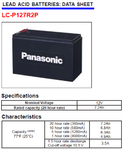b.heuju
Junior Member level 2

Suppose, I have an adapter rated 12V, 800mA. Does it mean that I can draw maximum current of 800mA or does it supply a constant current of 800mA at 12V.
Now, if I want to create a clone of that adapter then shall I design it so that a constant 800mA current is drawn, or maximum of 800mA. I can simply design to draw constant 800mA using emitter biased transistor, but how can I make it such that max 800mA is drawn?
Another thing is, I have got a device that is powered by that 12V, 800mA adapter. I have a SLA 12V, 7.2AHr battery. I do know what that 7.2AHr means. Can I directly connect the battery to the device? Or a really high current will flow from battery that will damage the device? If so then what should be done to get the device powered by the battery.
Now, if I want to create a clone of that adapter then shall I design it so that a constant 800mA current is drawn, or maximum of 800mA. I can simply design to draw constant 800mA using emitter biased transistor, but how can I make it such that max 800mA is drawn?
Another thing is, I have got a device that is powered by that 12V, 800mA adapter. I have a SLA 12V, 7.2AHr battery. I do know what that 7.2AHr means. Can I directly connect the battery to the device? Or a really high current will flow from battery that will damage the device? If so then what should be done to get the device powered by the battery.




